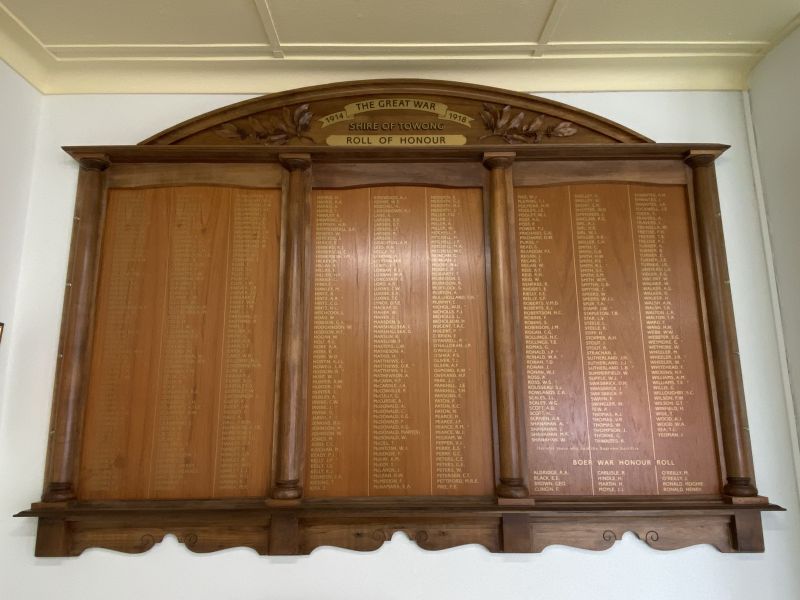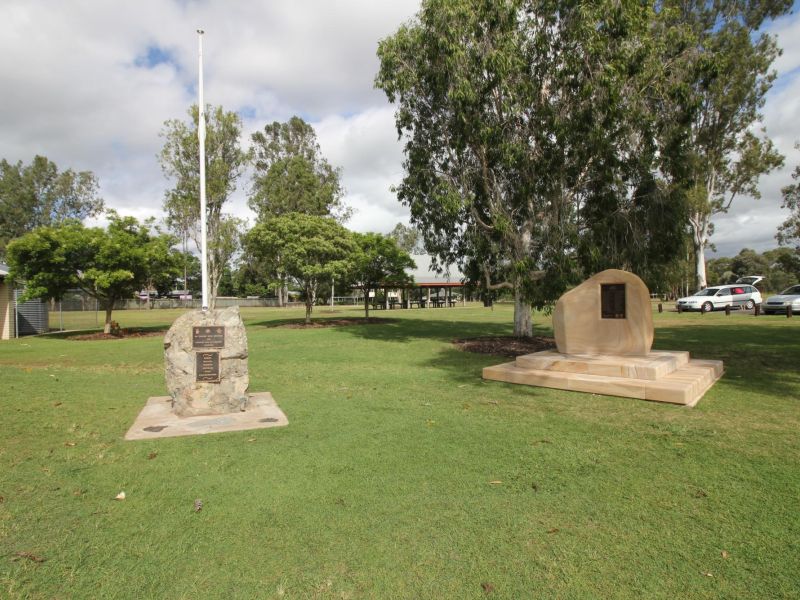David James Farthing
Bob was born in 1898 at Allansford, Victoria, 10 kilometres east of Warnambool. He was the second eldest of six children for William Ikin and Margaret Elizabeth (née Morgan) Farthing. During his early years Bob attended Allansford State School (No. 3). By 1914 the family had moved from the Western Districts of Victoria and taken up farming at Noorongong near Tallangatta. After the end of the First World War the family returned to Allansford.
Bob enlisted at Melbourne on the 7th of December, 1915. On his enlistment papers he gave his age as 21 years and 1 month. On his Australian War Memorial Roll of Honour Circular, his father states that, at the time of his death, Bob had only just turned 18. He was allocated the Regimental Number 2116 and posted to the 21st Depot Battalion at Warnambool. By December the 20th he was transferred to No. 4 Depot at Seymour. After initial training he was again transferred, this time to the 15th Reinforcements of the 8th Light Horse Regiment. The unit embarked on HMAT A43 Barunga at Melbourne on the 7th of April, 1916.
Upon arriving at Tel-el-Kabir he was taken on strength with the 3rd Training Regiment. Two months later he was transferred to No. 11 Company, 3rd Battalion of the Imperial Camel Corps (ICC). During the second half of 1916 the ICC was used for long patrols in the Western Desert, often experiencing brief skirmishes with the Senussi, a religious order of Arabic nomads. In late 1916 the corps was transferred to the Sinai desert to take part against the Turkish army. Bob, and his fellow cameleers, were to fight alongside units of the Australia Light Horse at Romani and Magdhaba.
In early January, following the battle of Magdhaba, units of the Desert Column advanced towards Rafa on the Mediterranean border between Egypt and Palestine.
Private W.M. McDonald (3192) of No. 4 Company, Australian Camel Corps, wrote a book of verse entitled “Soldier Songs from Palestine”. One of his poems is entitled “The Battle of Raffa”. The second verse describes the movement of the Allied column towards the village of Raffa.
“The sand gleams white and ghostly in the full moon’s eerie light,
Where the riders jostle roughly as they move on through the night;
For the old trails merge together and the tracks move in and out,
While the outline glints a moment of a skyline-riding scout.
While the army moves on steadily while the stars blink in the sky,
And the lights and sounds are missing, for the foe is lurking nigh,
So they push on through the half-light with the silence all around,
Save the soft pad of the camel and the horse-hoofs on the ground;
And they force the camels onward and the horsemen use the spur,
While the gun-wheels creak and rattle with a tingling, wheezing whirr;
Till dawn lights up the Eastern sky beyond the foe-lined hill,
Where trenches lie on crest and slope designed with martial skill.”
Private McDonald died of wounds recieved at the battle of Gaza on the 19th of April, 1917. His book of verse can be read online at the Trove website.
Aerial reconnaissance reported that the village was held by over two thousand Turks occupying a network of trenches rising in tiers around an earthen redoubt on a central knoll. Whilst the trenches were not protected by wire they completely dominated the long bare slope leading up to them.
The attack commenced at dawn on the 9th of January. The Infantry and Cameleers, after advancing on foot for about one and a half miles (2.5 km) without any cover, fought hard for several hours. Although enemy reinforcements were reported to be coming in from the east the position was in Allied hands by dark.
By 0100 hours the following morning, the decision was made to withdraw to El Arish. Sand carts, sledges and cacolet (baskets on camels) were used to move the wounded back to the railhead and then by train to Port Said and Cairo. Bob, along with 13 OR (other ranks) from his battalion, had been wounded during the action. He had been wounded in the temple and eyes by gunshot. On the 12th of January he was admitted to the 24th Stationary Hospital at Kantara. The following day he succumbed to his wounds.
Bob was buried in the Kantara War Memorial Cemetery, Egypt, with Chaplain A F Findbury officiating at the service. He is remembered on his parent’s headstone at Warnambool cemetery, the Australian War Memorial Roll of Honour, the Fernvale Hall Honour Roll, the Allansford Memorial Pavilion, and the Towong Shire Boer War and WW1 Roll of Honour at Tallangatta, Victoria. For his service, he was awarded the British War Medal and the Victory Medal.
 Stephen Learmonth
Stephen Learmonth

